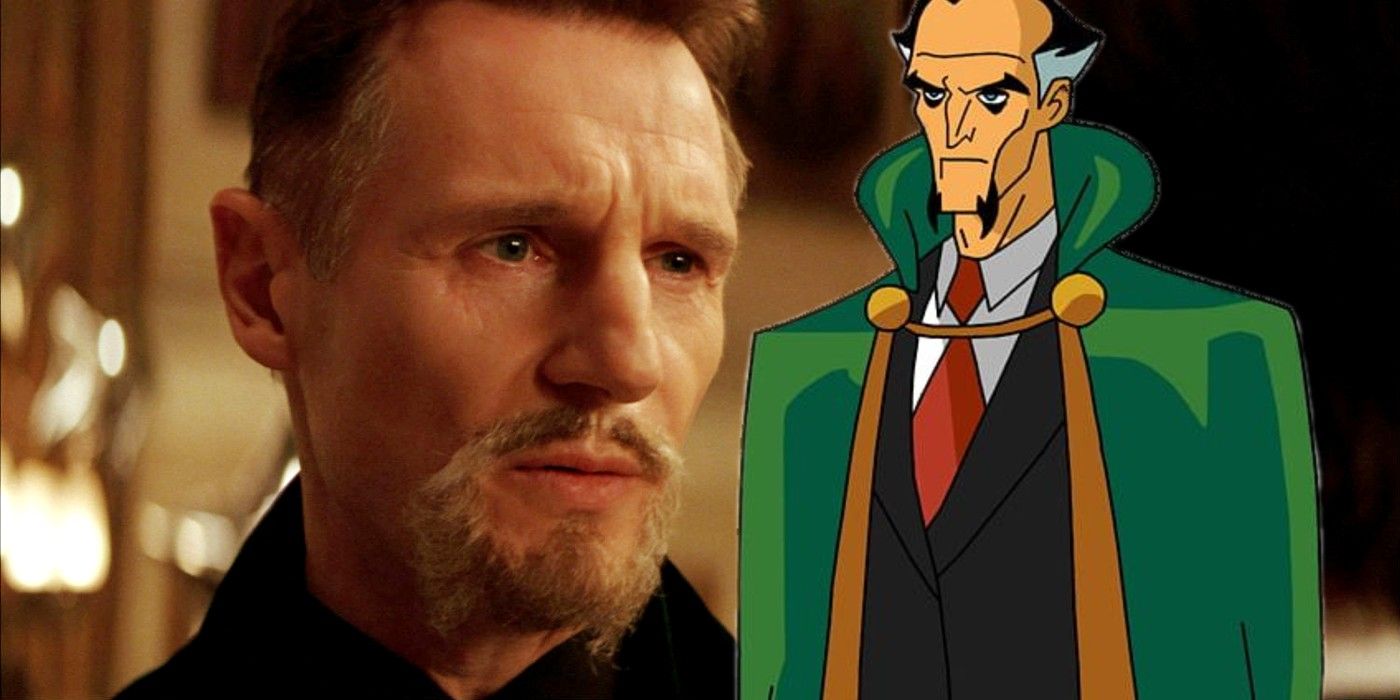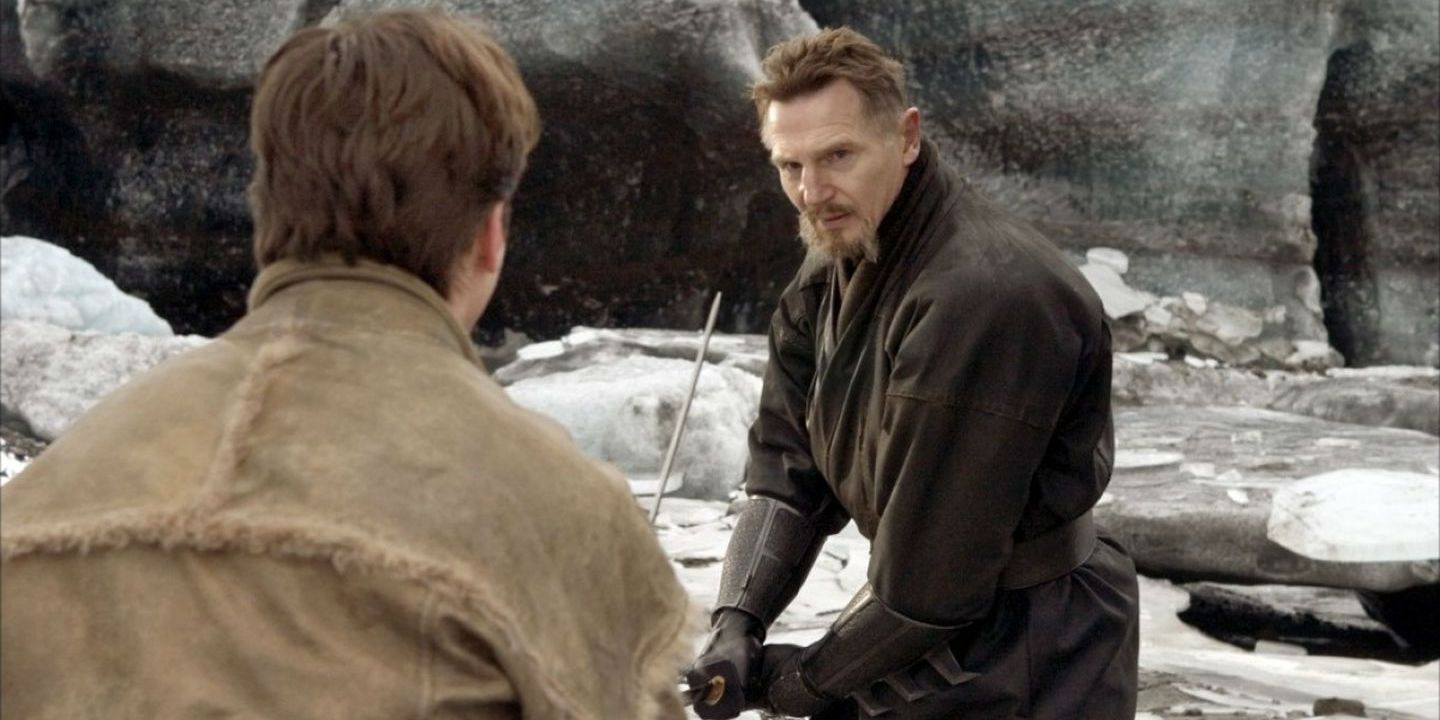Does Liam Neeson's cameo return as Ra's al Ghul in The Dark Knight Rises tie into the comic character's immortality? When Christopher Nolan brought Batman back from his cinematic hiatus for 2005's Batman Begins, the director had a clear intention to ground Gotham City in stark reality, and this made his choice of villains vital. Liam Neeson as Ra's al Ghul proved to be a masterstroke. Simultaneously providing Christian Bale's Bruce Wayne with an origin story and a worthy first opponent, Ra's was somewhat toned down from the DC comics - less a mystical ancient warrior and more a mysterious master of ninjutsu. Whatever he was, Bruce kills his old master (or more accurately, "chooses not to save him") during their fight on the monorail.
Two films later, an older, more jaded Bruce Wayne is locked in a deadly feud with Bane, and the future of Gotham City is at stake. Little does the Caped Crusader know that his brawny opponent is merely a puppet for Talia al Ghul, Ra's daughter come to finish the work started by Neeson's character in Batman Begins. After the first round clash between Batman and Bane, Bruce is taken to The Pit, an old prison seemingly located in India where he endures a swift but grueling recovery. It's here, while hanging from a rope in order to repair his broken back, that Bruce is confronted by an old enemy.
Liam Neeson reprises his role as Ra's al Ghul for this short scene, appearing to Bruce as a sharply-dressed vision borne of intense pain and hallucination. Because Ra's has a reputation for repeatedly cheating death in the DC comics, some interpreted this scene as an indication that Neeson's villain was indeed still alive. After all, there's no body seen at the end of Batman Begins. However, Ra's al Ghul's appearance in The Dark Knight Rises is merely an illusion taking place in Bruce Wayne's mind. The villain's purpose here is to physically represent Bruce's thought process, working out what the other inmates have told him and (incorrectly) deducing that Bane must be the child of Ra's. Nevertheless, the cameo does play on Ra's al Ghul's comic book immortality.
In Batman lore, Ra's has avoided the grim reaper time and time again through the use of Lazarus Pits, naturally occurring phenomena that can revitalize those who take a dip. Obviously, this supernatural aspect of the Ra's al Ghul character is very far removed from Nolan's grounded vision, and so was stripped away from Neeson's character. But when "Ducard" reveals himself as the true Ra's al Ghul in Batman Begins, he alludes to being immortal, although he's clearly speaking figuratively about the "idea" of Ra's. This line is why Bruce's vision in the third film asks "did you not think I would return?" The exchange shows Bruce's enduring paranoia that Ra's might not be truly dead - something directly inspired by the comics.
Neeson's return and claim to eternal life in The Dark Knight Rises is essentially Nolan's reinterpretation of Ra's al Ghul's literal immortality in Batman mythology. The vision tells Bruce that there are many different ways to be immortal, and this quote hides several meanings. In the narrative, Bruce figures out that Ra's immortality manifests in the form of a successor who shares the same evil ideals. From a meta perspective, the vision scene is Nolan's way of granting his Ra's "immortality" without actually making him an ancient mystic with paranormal powers. Viewers know that the Ra's al Ghul of the Dark Knight trilogy did actually die in the first film, but through the hallucination plot device, the character himself can come back from the grave to haunt Bruce Wayne, just as the comic version did in a literal sense.


